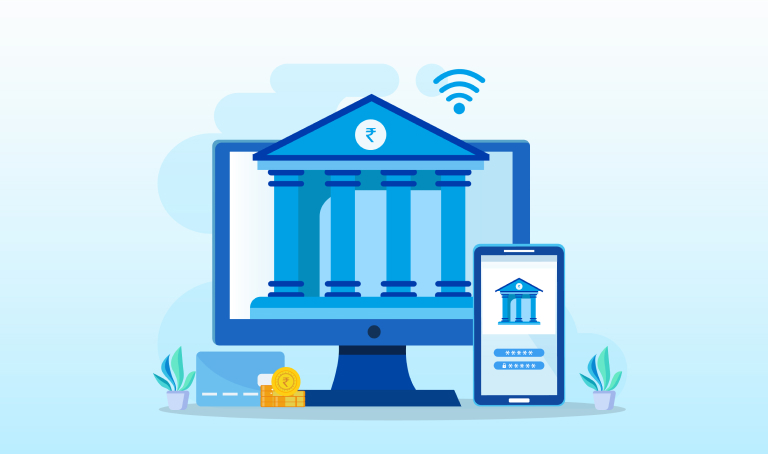7 Retail banking trends to watch out for in 2023
Updated On : August 2023
The banking sector is wholeheartedly dedicated to providing an enhanced digital banking experience by embracing novel technologies as we step into the year 2023, introducing innovative products, and forging strategic collaborations. Recent studies indicate a pressing need for transformative action, raising the question of whether financial institutions will be willing to allocate the necessary resources amid a period of economic unpredictability.
At this pivotal juncture, the banking sector finds itself standing at the intersection of the boundless possibilities offered by digital transformation and the formidable hurdles presented by an enigmatic economic landscape. Despite the industry's apparent comprehension of the prerequisites for effectively vying with alternative digital banking providers and catering to the ever-growing demands of discerning consumers, there persists a palpable reluctance to wholeheartedly embrace the imperative changes indispensable for swift and expansive progress.
The retail banking industry is undergoing constant change, and customer preferences are the driving force behind these significant changes. With 2023 moving ahead at a fast pace, it’s important for banks to stay ahead by adapting to emerging trends. In this article, we'll shed light on a few retail banking trends that will push the future of the industry ahead at a fast pace.
Regulatory Reporting Requirements for NBFCs
NBFCs in India have to comply with certain regulatory reporting requirements laid down by The Reserve Bank of India (RBI)
- Digital-First Banking
The pervasive transition towards a digital-first banking paradigm has been in motion for an extended duration; however, the year 2023 promises an intensified focus on the realm of online and mobile banking services, propelling it to unprecedented heights. Customers are increasingly demanding seamless, user-friendly digital experiences, and banks must invest in their digital platforms to meet these expectations.- Mobile banking apps: In an era characterized by boundless innovation, mobile banking apps are poised to undergo a revolutionary transformation, where the integration of cutting-edge advancements, including AI-powered financial guidance and biometric authentication, will rapidly evolve from novelty to norm.
- Digital account opening: Banks will continue to streamline the account opening process, making it easier for customers to open accounts online without visiting a branch.
- Open Banking and API Integration
Open banking is transforming the way customers interact with their financial data. By leveraging APIs, banks can offer customers a more personalized and convenient banking experience.- Third-party integrations: Banks will increasingly collaborate with fintech companies to offer innovative services and products.
- Data-driven insights: Open banking will enable banks to provide customers with tailored financial advice based on their transaction history and spending habits.
- Artificial Intelligence and Automation
The impending future of retail banking unveils a pivotal role for AI and automation, poised to exert a profound impact on the industry by augmenting operational efficiency and elevating the realm of customer service to unprecedented levels of excellence.- AI-powered chat bots: Banks will persist in allocating resources towards AI-powered chat bots, proficiently equipped to handle routine customer inquiries. This strategic implementation liberates personnel, enabling them to channel their expertise towards more complex tasks.
- Automated decision-making: AI algorithms will take over to handle credit assessments and fraud detection processes, which will result in flawless decision making.
- Personalized Banking Experiences
As customers demand more personalized services, banks will need to harness data analytics to deliver tailored experiences.- Customized product offerings: Banks will use customer data to offer personalized financial products and services, such as tailored loan terms or targeted savings plans.
- Behavioural analytics: By analyzing customer behaviour, banks can identify patterns and preferences, enabling them to provide more relevant and timely offers.
- Sustainable and Socially Responsible Banking
Sustainability and social responsibility are becoming increasingly important to customers, and banks must adapt to meet these expectations.- Green finance: Banks will offer more eco-friendly financial products, such as green bonds and sustainable investment funds.
- Community-focused initiatives: Banks will invest in local communities through initiatives like financial education programs and support for small businesses.
- Enhanced Security and Privacy
Amidst the surge of digital banking, the utmost importance lies in safeguarding customer data, forging an impervious sanctuary of security and privacy.- Biometric authentication: In a relentless pursuit of fortified security, banks shall embrace cutting-edge biometric authentication techniques, including facial recognition and fingerprint scanning, transcending conventional barriers.
- Data privacy regulations: In a landscape of ever-shifting data privacy regulations, banks shall navigate the intricate terrain to ensure compliance, fortifying the shield protecting customer information.
- Branch Transformation
Physical branches will still have a major role to play in the future of retail banking, despite the rise of digital banking.- Smaller, tech-driven branches: Banks will redesign branches to be more focused on technology and self-service, with fewer staff and smaller footprints.
- Branch specialization: Some branches may become specialized hubs for specific services, such as mortgage advice or business banking.
In conclusion, the retail banking landscape is set to undergo significant changes in 2023. By staying informed about these retail banking trends, banks and financial institutions can adapt and thrive in this rapidly evolving industry to a great extent.
Nelito Systems offers customized solutions and services for its clients in finance and other sectors. To know more about it, write us at marketing@nelito.com or visit digital banking page.


Comments :